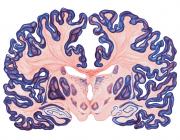A dynamic interplay within the frontoparietal network underlies rhythmic spatial attention.
Publication Year
2018
Type
Journal Article
Abstract
Classic studies of spatial attention assumed that its neural and behavioral effects were continuous over time. Recent behavioral studies have instead revealed that spatial attention leads to alternating periods of heightened or diminished perceptual sensitivity. Yet, the neural basis of these rhythmic fluctuations has remained largely unknown. We show that a dynamic interplay within the macaque frontoparietal network accounts for the rhythmic properties of spatial attention. Neural oscillations characterize functional interactions between the frontal eye fields (FEF) and the lateral intraparietal area (LIP), with theta phase (3–8 Hz) coordinating two rhythmically alternating states. The first is defined by FEF-dominated beta-band activity, associated with suppressed attentional shifts, and LIP-dominated gamma-band activity, associated with enhanced visual processing and better behavioral performance. The second is defined by LIP-specific alpha-band activity, associated with attenuated visual processing and worse behavioral performance. Our findings reveal how network-level interactions organize environmental sampling into rhythmic cycles.
Journal
Neuron
Volume
99
Pages
842-53

